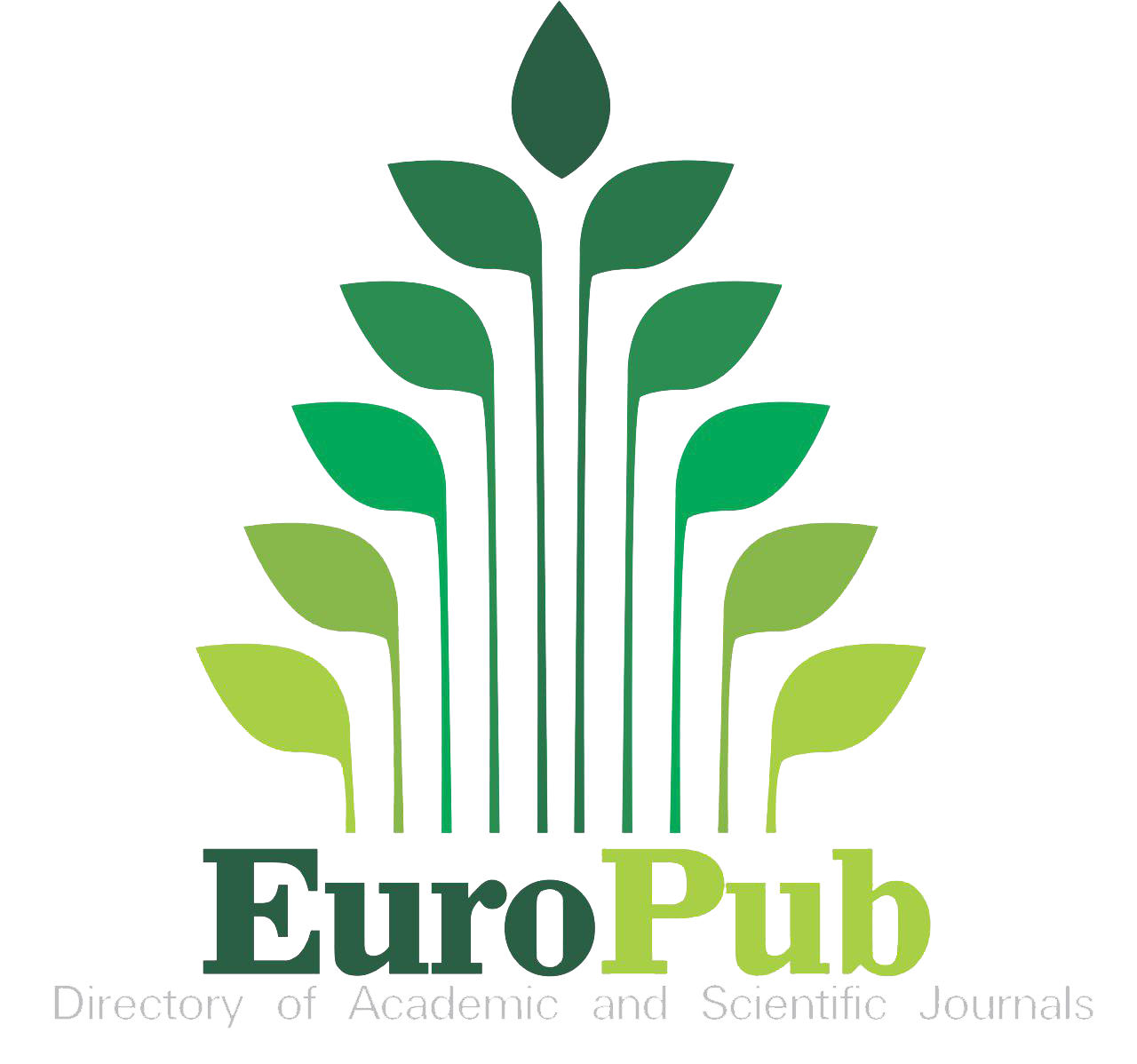Performance and risk of Brazilian equity mutual funds in the context of the covid-19 pandemic
DOI:
https://doi.org/10.16930/2237-766220223282Keywords:
Equity mutual funds, Performance, COVID-19Abstract
The goal of this research was to analyze how Brazilian equity investment funds behaved during the Covid-19 period. The analysis was divided into 3 sub-periods: (i) pre-crisis (2019-10-03 to 2020-01-31); (ii) crash (2020-02-19 to 2020-03-23); (iii) and recovery (2020-03-24 to 2020-04-30. The main results showed that during the crash period, in all the categories, more than 50% of the funds obtained a return superior to that of the IBRX100. However, in the recovery period, the scenario is reversed and the vast majority of funds start to underperform the index. However, when performance is analyzed from the perspective of multifactor risk models, it is possible to identify positive alpha generation during the pre-crisis period and negative (destruction of value) during the crash period. In addition, when examining fund flows, it can be seen that there was no "run on the fund" phenomenon to redeem the shares. Actually, in the analyzed period, the inflows surpassed the redemptions. This may indicate that the fund investors are financially more educated and that he or she acted with more caution when waiting for a less turbulent moment. The article concludes that the industry was coming from an excellent performance in the pre-crisis period, which was interrupted by a period of value destruction during the moment of the greatest turmoil, and that, finally, during the recovery period, the performance was below the market index, but without generating or destructing significant value.
References
Akhtaruzzaman, M., Boubaker, S., & Sensoy, A. (2021). Financial contagion during COVID–19 crisis. Finance Research Letters. https://doi.org/10.1016/j.frl.2020.101604 DOI: https://doi.org/10.2139/ssrn.3584898
Alvarenga, D. (2020). Bovespa despenca quase 14% após 5° ’circuit breaker’ em 6 pregões. G1 Economia, Globo.Com. Retrieved from https://g1.globo.com/economia/noticia/2020/03/16/bovespa.ghtml
Alqadhib, H., Kulendran, N. & Seelanatha, L. (2022). Impact of COVID-19 on mutual fund performance in Saudi Arabia. Cogent Economics & Finance. 10(1), 2056361. https://doi.org/10.1080/23322039.2022.2056361 DOI: https://doi.org/10.1080/23322039.2022.2056361
Anbima. (2021). Indústria de fundos registra captação líquida recorde no primeiro semestre de 2021. Retrieved from https://www.anbima.com.br/pt_br/informar/relatorios/fundos-de-investimento/boletim-de-fundos-de-investimentos/industria-de-fundos-registra-captacao-liquida-recorde-no-primeiro-semestre-de-2021-8A2AB2B67A6CAA21017A81952126553E-00.htm
Borges, E. C., & Martelanc, R. (2015). Sorte ou habilidade: uma avaliação dos fundos de investimento no Brasil. Revista de Administração, 50(2), 196–207. https://doi.org/10.5700/rausp1194 DOI: https://doi.org/10.5700/rausp1194
Carhart, M. M. (1997). On Persistence in Mutual Fund Performance. The Journal of Finance, 52(1), 57–82. https://doi.org/10.1111/j.1540-6261.1997.tb03808.x DOI: https://doi.org/10.1111/j.1540-6261.1997.tb03808.x
Castro, B. R., & Minardi, A. M. A. F. (2009). Comparacao do Desempenho dos Fundos de Acoes Ativos e Passivos. Revista Brasileira de Financas, 7(2), 1–13. DOI: https://doi.org/10.12660/rbfin.v7n2.2009.1310
Chen, H., Qian, W., & Wen, Q. (2021). The Impact of the COVID-19 Pandemic on Consumption: Learning from High-Frequency Transaction Data. AEA Papers and Proceedings. https://doi.org/10.1257/pandp.20211003 DOI: https://doi.org/10.1257/pandp.20211003
Chen, J., Hong, H., Huang, M., & Kubik, J. D. (2004). Does fund size erode mutual fund performance? The role of liquidity and organization. American Economic Review, 94(5), 1276–1302. https://doi.org/10.1257/0002828043052277 DOI: https://doi.org/10.1257/0002828043052277
CVM. Instrução CVM No 555, de 17 de dezembro de 2014, com as Alterações Introduzidas pelas Instruções CVM No 563/1, 564/15 E 572/15. Dispõe sobre a constituição, a administração, o funcionamento e a divulgação de informações dos fundos de investimento. , (2014).
Döttling, R., & Kim, S. (2020). Sustainability Preferences Under Stress: Evidence from Mutual Fund Flows During COVID-19. SSRN Electronic Journal. https://doi.org/10.2139/ssrn.3656756 DOI: https://doi.org/10.2139/ssrn.3656756
Fahlenbrach, R., Rageth, K., & Stulz, R. M. (2021). How Valuable Is Financial Flexibility when Revenue Stops? Evidence from the COVID-19 Crisis. Review of Financial Studies. https://doi.org/10.1093/rfs/hhaa134 DOI: https://doi.org/10.3386/w27106
Falato, A., Goldstein, I., & Hortaçsu, A. (2021). Financial fragility in the COVID-19 crisis: The case of investment funds in corporate bond markets. Journal of Monetary Economics. https://doi.org/10.1016/j.jmoneco.2021.07.001 DOI: https://doi.org/10.3386/w27559
Fama, E. F., & French, K. R. (1993). Common risk factors in the returns on stocks and bonds. Journal of Financial Economics, 33(1), 3–56. https://doi.org/10.1016/0304-405X(93)90023-5 DOI: https://doi.org/10.1016/0304-405X(93)90023-5
Fama, E. F., & French, K. R. (2015). A five-factor asset pricing model. Journal of Financial Economics, 116(1), 1–22. DOI: https://doi.org/10.1016/j.jfineco.2014.10.010
Farboodi, M., Jarosch, G., & Shimer, R. (2021). Internal and external effects of social distancing in a pandemic. Journal of Economic Theory. https://doi.org/10.1016/j.jet.2021.105293 DOI: https://doi.org/10.3386/w27059
Ferreira, M. A., Keswani, A., Miguel, A. F., & Ramos, S. B. (2013). The Determinants of mutual fund performance: A cross-country study. Review of Finance, 17(2), 483–525. https://doi.org/10.1093/rof/rfs013 DOI: https://doi.org/10.1093/rof/rfs013
Gormsen, N. J., & Koijen, R. S. J. (2020). Coronavirus: Impact on stock prices and growth expectations. Review of Asset Pricing Studies. https://doi.org/10.1093/rapstu/raaa013 DOI: https://doi.org/10.3386/w27387
Greenstone, M., & Nigam, V. (2020). Does social distancing matter? University of Chicago, Becker Friedman Institute for Economics Working Paper, 2020–26. DOI: https://doi.org/10.2139/ssrn.3561244
Harjoto, M. A., Rossi, F., Lee, R., & Sergi, B. S. (2021). How do equity markets react to COVID-19? Evidence from emerging and developed countries. Journal of Economics and Business. https://doi.org/10.1016/j.jeconbus.2020.105966 DOI: https://doi.org/10.1016/j.jeconbus.2020.105966
Israelsen, C. L. (2005). A refinement to the Sharpe ratio and information ratio. Journal of Asset Management, 5(6), 423–427. https://doi.org/10.1057/palgrave.jam.2240158 DOI: https://doi.org/10.1057/palgrave.jam.2240158
Klapper, L., Sulla, V., & Vittas, D. (2004). The development of mutual funds around the world. Emerging Markets Review, 5(1), 1–38. https://doi.org/10.1016/j.ememar.2003.12.001 DOI: https://doi.org/10.1016/j.ememar.2003.12.001
Khelifa, S. B., & Arsi, S. (2022). Islamic equity funds and stock market: dynamic relation and market timing during the COVID-19 outbreak. Journal of Economic and Administrative Sciences, (ahead-of-print). DOI: https://doi.org/10.1108/JEAS-08-2021-0173
Landier, A., & Thesmar, D. (2020). Earnings expectations during the COVID-19 crisis. Review of Asset Pricing Studies. https://doi.org/10.1093/rapstu/raaa016 DOI: https://doi.org/10.3386/w27160
Lintner, J. (1965). Security Prices, Risks, and Maximal Gains from Diversification. The Journal of Finance, 20(4), 587–615. https://doi.org/http://doi.org/10.1111/j.1540-6261.1965.tb02930.x DOI: https://doi.org/10.1111/j.1540-6261.1965.tb02930.x
Maheen (2021): Impact of COVID-19 on the performance of emerging market mutual funds: evidence from India. Future Business Journal. DOI: https://doi.org/10.1186/s43093-021-00081-w
Malaquias, R., & Maestri, C. (2017). Effects of Manager Characteristics on Portfolio Composition of Multimarket Funds. Revista Universo Contábil, 13(2), 89–108. https://doi.org/10.4270/ruc.2017210 DOI: https://doi.org/10.4270/ruc.2017210
Markowitz, H. M. (1952). Portfolio selection. The Journal of Finance, 7(1), 77–91. https://doi.org/10.1111/j.1540-6261.1952.tb01525.x DOI: https://doi.org/10.1111/j.1540-6261.1952.tb01525.x
Mazur, M., Dang, M., & Vega, M. (2020). COVID-19 and the March 2020 Stock Market Crash. Evidence from S&P1500. Finance Research Letters, (March), 101690. https://doi.org/10.1016/j.frl.2020.101690 DOI: https://doi.org/10.2139/ssrn.3586603
Milani, B., & Ceretta, P. S. (2013). Efeito tamanho nos fundos de investimento brasileiros. Revista de Administração Da UFSM, 6(1). https://doi.org/10.5902/198346593607 DOI: https://doi.org/10.5902/198346593607
Mirza, N., Hasnaoui, J. A., Naqvi, B., & Rizvi, S. K. A. (2020). The impact of human capital efficiency on Latin American mutual funds during Covid-19 outbreak. Swiss Journal of Economics and Statistics. https://doi.org/10.1186/s41937-020-00066-6 DOI: https://doi.org/10.1186/s41937-020-00066-6
Mirza, N., Naqvi, B., Rahat, B., & Rizvi, S. K. A. (2020). Price reaction, volatility timing and funds’ performance during Covid-19. Finance Research Letters. https://doi.org/10.1016/j.frl.2020.101657 DOI: https://doi.org/10.1016/j.frl.2020.101657
Mossin, J. (1966). Equilibrium in a Capital Asset Market. Econometrica, 34(4), 768–783. DOI: https://doi.org/10.2307/1910098
Nerasti, J. N., & Lucinda, C. R. (2016). Persistência de Desempenho em Fundos de Ações no Brasil. Brazilian Review of Finance, 14(2), 269–297. DOI: https://doi.org/10.12660/rbfin.v14n2.2016.57958
Pástor, Ł., & Vorsatz, M. B. (2020). Mutual fund performance and flows during the COVID-19 crisis. Review of Asset Pricing Studies. https://doi.org/10.1093/rapstu/raaa015 DOI: https://doi.org/10.3386/w27551
Paz, R. L., Iquiapaza, R. A., & Bressan, A. A. (2017). Influence of Investor’ Monitoring on Equity Mutual Funds’ Performance. Gestão, Finanças e Contabilidade, 7(2), 79. https://doi.org/10.18028/2238-5320/ rgfc.v7n2p79-101
Ramelli, S., & Wagner, A. F. (2020). Feverish stock price reactions to COVID-19. Review of Corporate Finance Studies. https://doi.org/10.1093/rcfs/cfaa012 DOI: https://doi.org/10.2139/ssrn.3550274
Roll, R. (1977). A critique of the asset pricing theory’s tests Part I: On past and potential testability of the theory. Journal of Financial Economics, 4, 129–176. https://doi.org/10.1016/0304-405X(77)90009-5 DOI: https://doi.org/10.1016/0304-405X(77)90009-5
Ross, S. A. (1976). The arbitrage theory of capital asset pricing. Journal of Economic Theory, 13, 341–360. https://doi.org/10.1016/0022-0531(76)90046-6 DOI: https://doi.org/10.1016/0022-0531(76)90046-6
Seven, Ü., & Yılmaz, F. (2021). World equity markets and COVID-19: Immediate response and recovery prospects. Research in International Business and Finance. https://doi.org/10.1016/j.ribaf.2020.101349 DOI: https://doi.org/10.1016/j.ribaf.2020.101349
Sharpe, W. F. (1964). Capital asset prices: A theroy of market equilibrium under conditions of risk. The Journal of Finance, 19(3), 425–442. https://doi.org/10.2307/2329297 DOI: https://doi.org/10.1111/j.1540-6261.1964.tb02865.x
Silva, S. E. D., Roma, C. M. D. S., & Iquiapaza, R. A. (2020). Portfolio turnover and performance of equity investment funds in Brazil. Revista Contabilidade & Finanças, 31(83), 332-347. https://doi.org/10.1590/1808-057x201909420 DOI: https://doi.org/10.1590/1808-057x201909420
Smales, L. A. (2021). Investor attention and global market returns during the COVID-19 crisis. International Review of Financial Analysis. https://doi.org/10.1016/j.irfa.2020.101616 DOI: https://doi.org/10.2139/ssrn.3623915
Varga, G., & Wengert, M. (2011). A indústria de fundos de investimentos no Brasil. Revista de Economia e Administração, 10(1), 66–109. https://doi.org/10.11132/rea.2010.361 DOI: https://doi.org/10.11132/rea.2010.361
Yarovaya, L., Mirza, N., Abaidi, J., & Hasnaoui, A. (2021). Human Capital efficiency and equity funds’ performance during the COVID-19 pandemic. International Review of Economics and Finance. https://doi.org/10.1016/j.iref.2020.09.017 DOI: https://doi.org/10.2139/ssrn.3626151
Zhang, D., Hu, M., & Ji, Q. (2020). Financial markets under the global pandemic of COVID-19. Finance Research Letters. https://doi.org/10.1016/j.frl.2020.101528 DOI: https://doi.org/10.1016/j.frl.2020.101528
Published
How to Cite
Issue
Section
License
Copyright (c) 2022 Revista Catarinense da Ciência Contábil

This work is licensed under a Creative Commons Attribution 4.0 International License.
The copyright for articles published in this journal belongs to the author (s), with first publication rights assigned to Revista Catarinense da Ciência Contábil. Due to appearing in this publicly accessible journal, articles are free to use, with mandatory recognition of the original authorship and initial publication in this magazine and for educational and non-commercial applications. The magazine chose to use published works for non-commercial purposes, including the right to submit or work for publicly accessible databases. The content of published articles is the sole and exclusive responsibility of the authors. - The author (s) authorize (s) a publication of the article in the journal; - The author (s) guarantee (s) that a contribution is original and unpublished and that it is not being evaluated in another magazine (s); - A magazine is not responsible for the opinions, ideas and concepts emitted in the texts, for the full responsibility of the author (s); - It is reserved to the editors or the right to make textual adjustments and to adjust the article to the publication rules.
This work is licensed under a Creative Commons Atribuição-NãoComercial-CompartilhaIgual 4.0 Internacional.










